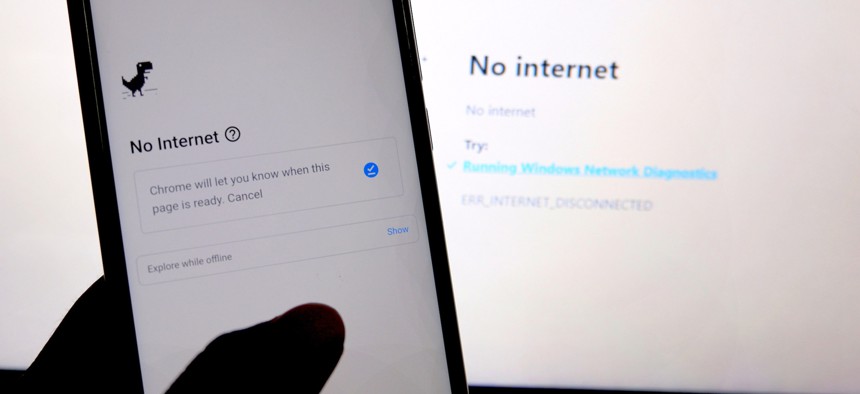New HUD Playbook Guides Underserved Communities in Accessing Broadband Funding

Avishek Das/SOPA Images/LightRocket via Getty Images
It seeks to help public housing authorities, multifamily owners and operators, and tribes determine how to spend federal broadband money to close the digital divide.
With more than $45 billion in federal funding available for broadband expansion in underserved communities, the U.S. Department of Housing and Urban Development put together a short guide to help states, territories and tribes when deploying high-speed internet service projects in their communities.
The guide offers helpful resources and tips for two programs: the Broadband Equity, Access, and Deployment (BEAD) Program and the Digital Equity Act (DEA).
It seeks to help public housing authorities, multifamily owners and operators, and tribes understand the mechanics of these two programs and the role they can play in ensuring that funds come to their neighborhoods—both urban and rural.
All 50 states, as well as Puerto Rico and Washington, D.C., have received planning funds for both programs. In the coming months, state broadband offices will work with stakeholders to determine how to spend that money to close the digital divide.
The guide explains the purpose and goals of the two programs, as well as eligible uses of planning funds, five-year action plan requirements, and the application and funding timelines.
BEAD is the larger of the two programs. Communities with no access to high-speed internet and those with download speeds between 25 and 100 megabits per second are the priority targets for more than $42 billion in grants, as are community institutions like schools, libraries and health care providers.
In August, states and other eligible entities submitted applications for planning funds that can be used for surveys to understand the barriers preventing communities from installing or expanding high-speed broadband networks. The next step is to consult with local, regional and tribal stakeholders, as well as public housing authorities, to create a five-year plan that identifies digital equity goals and the strategies that will be used to meet those goals. The guide walks stakeholders through these processes.
The second program, the Digital Equity Act, will provide devices and digital skills training for people in underserved communities. It is comprised of three grant programs: the first makes $60 million available for states, territories and tribes to develop equity plans; the next will distribute $1.44 billion over five years to implement those plans; and the third is a competitive grant program that will send $1.2 billion to organizations—including private-sector and nonprofit entities—to improve digital equity in communities and help targeted populations access high-speed internet.
In addition to breaking down requirements for action plans and the timeline and deadlines for both programs, the guide also provides contact information for state broadband officials.
Molly Bolan is the assistant editor for Route Fifty.
NEXT STORY: Treating public health disconnects with interoperable data






